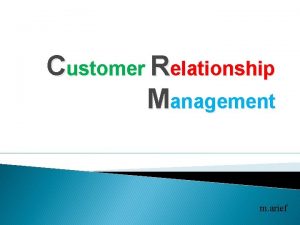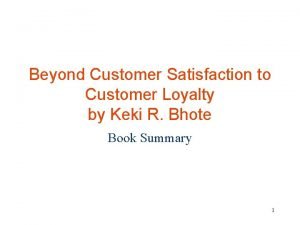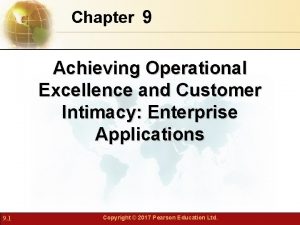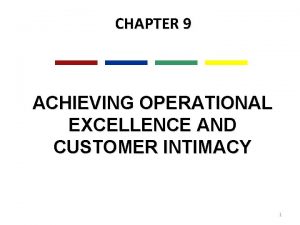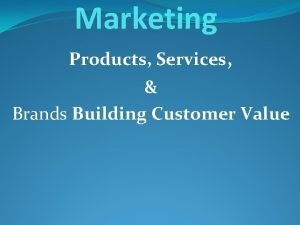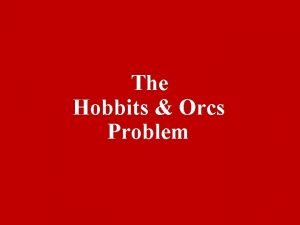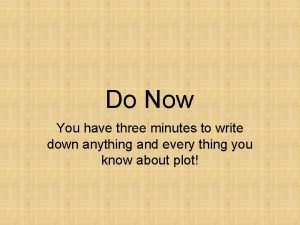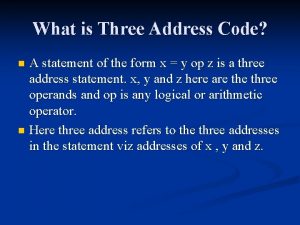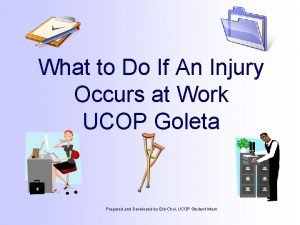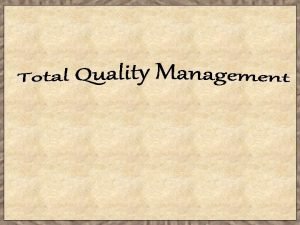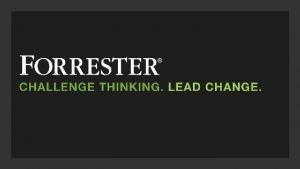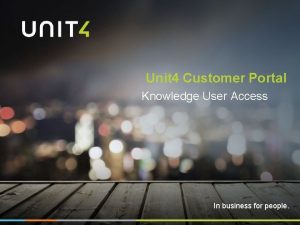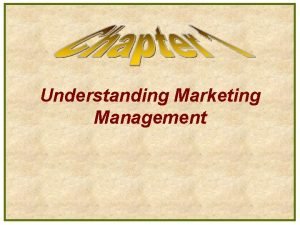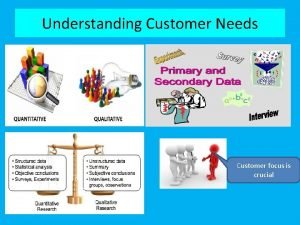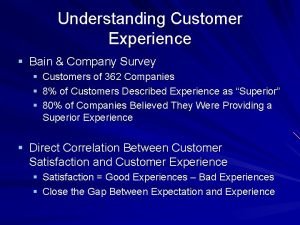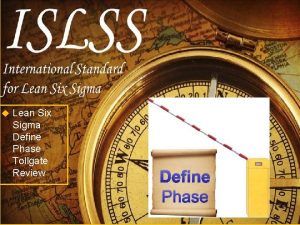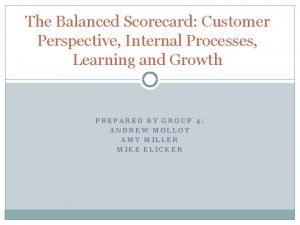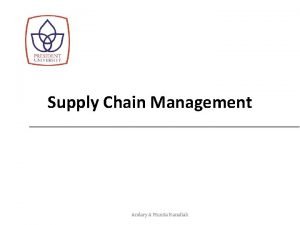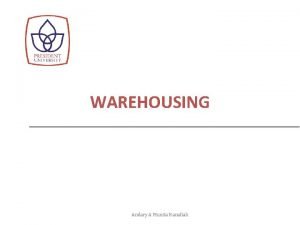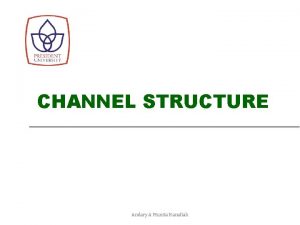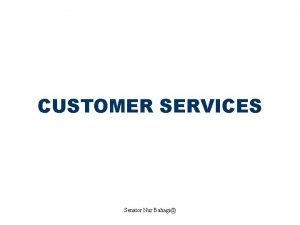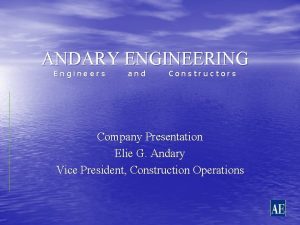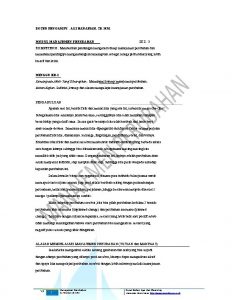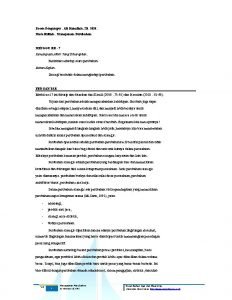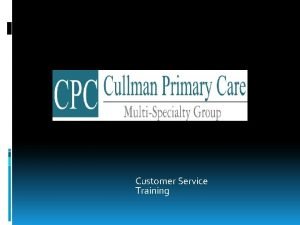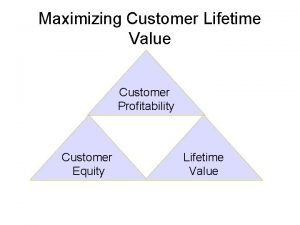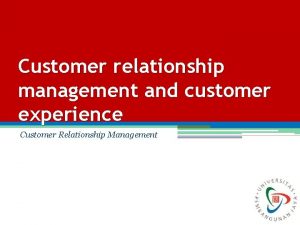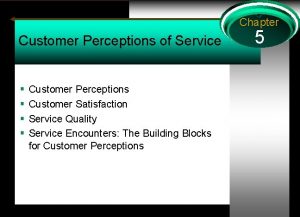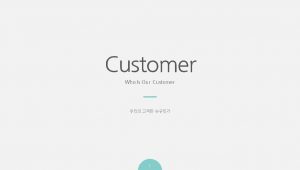CUSTOMER SERVICES Andary A Munita Hanafiah Three Cs

































- Slides: 33

CUSTOMER SERVICES Andary A Munita Hanafiah

Three C’s CUSTOMER VALUE COST DIFFERENTIAL COMPANY COMPETITOR

Definition And Scope Process For Providing Significant Value-added Benefits To The Customer In An Efficient Way Activity Process Performance Efficient Phil. Of Mngt. Customer- Focused

Stage Of Process 1. Pre Transaction 2. Transaction 3. Post Transaction

Pre Transaction Relate To Corporate Policies Or Program: • Written Customer Service Policy • Accessibility • Organization Structure • System Flexibility

Indicator Performance Pre Transaction • Stock Availability • Target Delivery • Response Time To Queries

Transaction Concern With Customer Service Variable Directly Involve In Performing The Services • Order Cycle Time • Inventory Availability • Order Fill Rate • Order Status Information

Indicator Performance Transaction • Order Fill Rate • On Time Delivery • Back-orders • Shipment Delay • Product Substitutions

Post Transaction Elements That Are Generally Supportive Of Product While In Use • Availability Of Spare Part • Call-out Time • Product Tracing/warranty • Customer Complaints, Claims, Etc.

Indicator Performance Post Transaction • First Call Fix Rate • Customer Complaints • Returns/claim • Invoice Error • Service Part Availability

Quality ? • Fitness for Use • Conform To Specification

Dimension of Service Quality • Tangible Appearance of physical facilities, equipment, personnel, and communication material • Reliability Ability to perform the promised service dependability and accurately • Responsiveness Willingness to help customers and provide prompt service

Dimension of Service Quality • Security Freedom from danger, risk, or doubt • Access Approachability and ease of contact • Communication Keeping customers informed in language they can understand listening to them • Understanding the Customer Making the effort to know customers and their needs

Service Standard 1. Order Cycle Time 2. Stock Availability 3. Order Size Constraint 4. Ordering Convinience 5. Frequency Of Delivery 6. Delivery Realibility 7. Documentation Quality 8. Claims Procedure 9. Order Completeness 10. Technical Support 11. Order Status Information

Composite Service Index Aggregat’s Indicator Of Customer Service That Can Be Used As A Management Tool CSI = Sum Of ( Iw X Pl) Iw : Importance Weight Of Service Element Pl : Pereformance Level Of Service Element

Focused On Customer 1. 2. 3. Customer Needs Product Become Worth Due To Services Has Added Value To The Core Product And Services Become Meaningful Only When Its Available And Positioned From The Customer’s Perspective At The Time And Place Required

Service Surround SERVICE CORE PRODUCT SURROUND

Customers’ Service Need 1. Identify The Key Component Of Customer Service 2. Establish The Relative Importance Service Components 3. Identify Cluster Of Customer

Setting Customer Service Priorities Profit Contribution LOW HIGH SEEK COST REDUCTION PROVIDE HIGH AVAILABILITY H I GH VOLUME L OW REVIEW JIT DELIVERY PROFIT CONTRIBUTION

Types Of Service 1. Basic Services Customer Service Program Upon Which A Firm Builds Its Fundamental Business Relationship 2. Zero Defect Services Customer Service Leads To Perfect Order Performance 3. Value Added Services Unique/specific Activities That Firm Can Jointly Work Out To Increase Effectiveness And Efficiency

I. Basic Service Capability Basic Capability To Satisfy The Customers Availability Performance Reliability

A. Availability Capability to have goods (inventory) when it is desired by a customer Operating Stock Safety Stock

Measurement Of Availability 1. Stock Out Frequency How Many Times Demand for Specific Product Exceeds Stock Available. 2. Fill Rate Number of Goods That Could Not Be Fulfill Promptly 3. Orders Shipped Complete Number of Order That Could Be Fulfill Completely and Promptly

B. Operational Performance Capability To Give The Services To The Customers Measured By: 1. 4. Speed 2. Consistency 3. Flexibility Mulfunction/recovery

Speed Elapsed Time From When An Order Is Placed Untill Shipment Arrival

Consistency Ability To Perform Orders At The Expected Delivery Time Over A Large Number Of Performance Cycle Compliance To Delivery Commitment Over Time

Flexibility Ability To Handle Extraordinary Customer Service Request Caused By: 1. Modification In Basic Service Arrangement 2. Support Of Unique Sales/ Marketing Program 3. New Product Introduction 4. Product Phase Out 5. Disruption In Supply 6. Product Recall 7. Customization

Mulfunction/Recovery Ability To Prevent Mulfunction Or To Prevent/ Accommodate Special Situation Contingency Plans

C. Reliability Ability To Comply Planned Inventory Availability And Operational Performance

II. Value Added Services 1. Customer focus services 2. Promotion focus services 3. Manufacturing focus services 4. Time focus services 5. Basic services

Competitive Service Strategy • Cost Leadership – – – Seeking Out Low Cost Customer Standardizing a Custom Service Reducing the Personal Element in Service Delivery Reducing Network Cost Taking Service Operation Off-line • Differentiation – – – Making the Intangible Tangible Customizing the Standard Product Reducing Perceived Risk Giving Attention to Personnel Training Controlling Quality • Focus

Challenge For Manager • Low Labor Intensity – – Capital Decision Technological Advances Managing Demand Scheduling Service Delivery • High Labor Intensity – Hiring – – – – Training Methods Development and Control Employee Welfare Scheduling Workforces Control of Far-flung Geographical Location Setup of New Unit Managing Growth

Challenge For Manager • Low Interaction/customization – Marketing – Service Oriented – Attention to Physical Surrounding • High Interaction/customization – – – Fighting Cost Increases Maintaining Quality Reacting to Consumer Intervention in Process Managing Advancement of People Delivering Service Gaining Employee Loyalty
 James andary
James andary Managing marketing information to gain customer insights
Managing marketing information to gain customer insights Customer relationship management and customer intimacy
Customer relationship management and customer intimacy Pengertian customer relation
Pengertian customer relation Beyond customer satisfaction to customer loyalty
Beyond customer satisfaction to customer loyalty Customer relationship management and customer intimacy
Customer relationship management and customer intimacy Customer relationship management and customer intimacy
Customer relationship management and customer intimacy Products, services, and brands: building customer value
Products, services, and brands: building customer value Registers of scotland customer services
Registers of scotland customer services Integrated and differentiated services in computer networks
Integrated and differentiated services in computer networks Wake county human services community services center
Wake county human services community services center Hobbits and orcs problem solution
Hobbits and orcs problem solution Othello act three scene three
Othello act three scene three In three minutes write
In three minutes write Purpose of traffic signs
Purpose of traffic signs The three colonial sections-one society or three
The three colonial sections-one society or three Three addresses in three address code are
Three addresses in three address code are What is incident report form
What is incident report form Quality is meeting or exceeding customer expectations
Quality is meeting or exceeding customer expectations Difference between consumer and customer
Difference between consumer and customer Maxie schmidt-subramanian
Maxie schmidt-subramanian Value proposition customer segment
Value proposition customer segment Usps business customer gateway user guide
Usps business customer gateway user guide Unit4 support portal
Unit4 support portal Buying signals from a customer
Buying signals from a customer Marketing management definition
Marketing management definition Customer focus examples
Customer focus examples Experiencebain
Experiencebain Tollgate review six sigma
Tollgate review six sigma Top-2-box customer satisfaction
Top-2-box customer satisfaction Internal process perspective examples
Internal process perspective examples Lso customer service
Lso customer service Strengths lists
Strengths lists Susi login
Susi login



